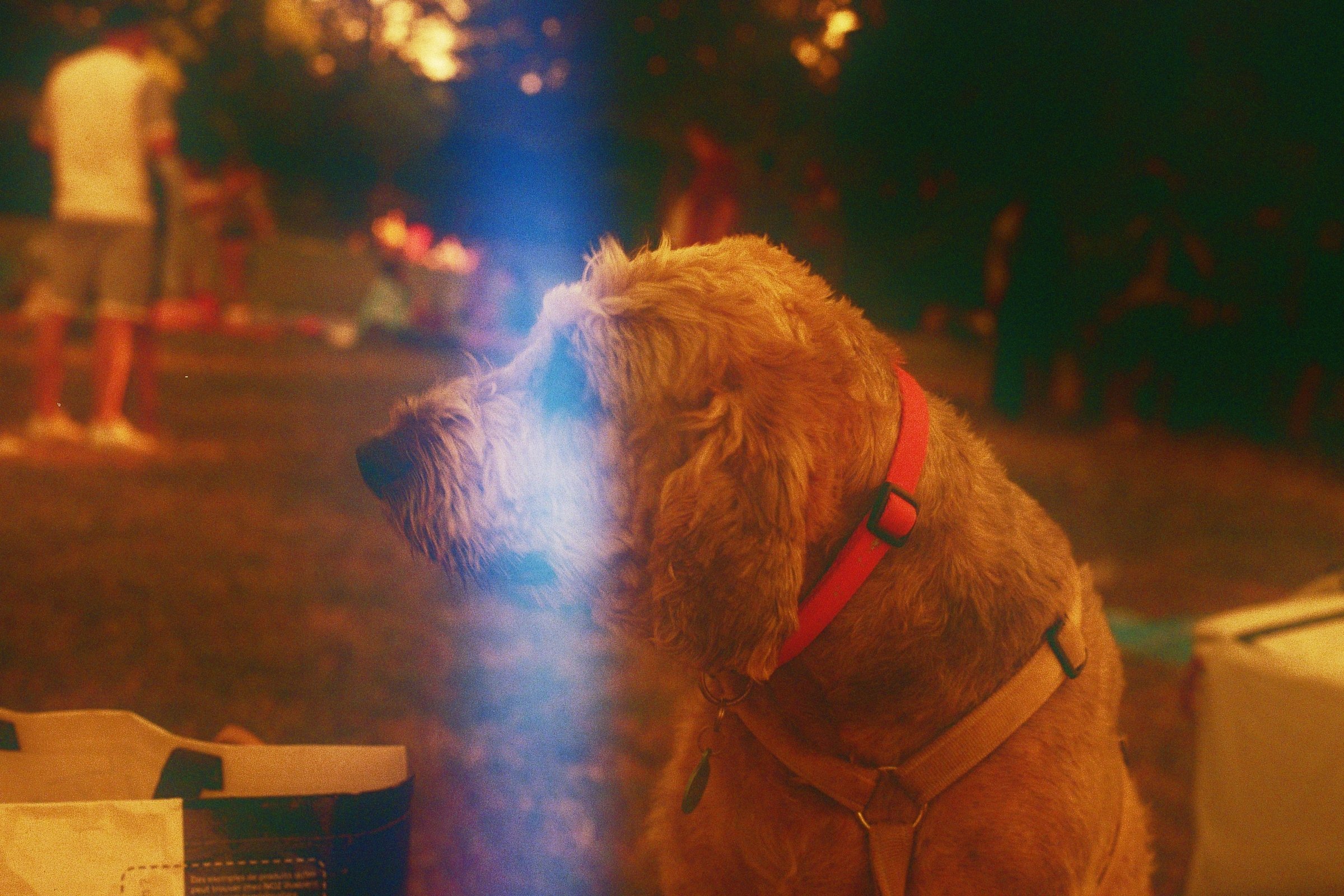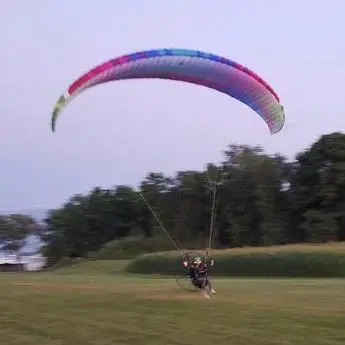You need a license. And yes the balloon cops (FAA) will be all over your ass in no time.
How come I don’t see any high-speed balloon chases then?
But my BIL had to get a license to fly his drone and needs to get approval from the FAA to go over like 100ft at my MILs house because it’s “so close” (like 3 miles in a straight line) to the airport.
How come I don’t see any high-speed balloon chases then?
That is impeded by laws higher than your country’s.
“in this house we obey the laws of thermodynamics!” -Homer
Also regular cops probably.
Good thing we took that training course eh Sarge?
Bake 'em away toys!
You don’t need a license to fly a gyrocopter, but you do need to file flight plans in advance.
Balloon cops
As they are more commonly known the FAA, and their enforcement arm - the USAF
The FAA can command the USAF?
Not directly, but depending on the airspace you are violating you might end up meeting some people who have absolutely zero chill
They don’t command them, but they call them in like you call the police.
Fun fact: From time to time, a pilot forgets to change frequency when entering a new area. This means the plane looks like it is not communicating. This is the most common reason why jets are sent to intercept an airliner. Of course, I would pay to see a recording of the pilots as they see the jet in front of them and realize they messed up.
Why would they send jets before trying different frequencies?
Seems like a waste of resources and too rapid of an escalation imo
I think switching to a frequency that a different region uses could be dangerous, since then the airplanes near do border would receive the signal but the airport wouldn’t. This could lead to misscommunications.
Also, the airline pays for the jets.
PS: source is https://youtu.be/9qM-xN7Bgg8
PPS: They do try the emergency frequency, routing a message through the previous area controller as well as anything else they can think of first. I left it out for brevity. Of course, fighter jets are not the first choice.
I mean there was that Chinese balloon last year that was literally shot down by a F-22 so… yes?
As they’re part of the federal government’s executive branch, kind of?
They have no jurisdiction in Europe though.
Air space is regulated and enforced here too. Even for drones.
Actually … You do
I’m not sure about lighter than air craft, but in the US you don’t need a license to fly microlight aircraft, as long as it’s less than 250 pounds and has less than a 5 gallon fuel tank, iirc
Well… Ya don’t.
But you do need a pilot certificate.
Licensed balloon pilot here… The only manned balloon for which you don’t need a license (in the US) is an ultralight, weighing less than 155lbs empty.
They do exist, though. They’re commonly called “cloudhoppers”. They are basically a climbing harness, backpack straps on a propane tank, and an overhead flamethrower, all hanging underneath a pup tent.
Edit: you can increase the weight to 254lbs empty if instead of a “balloon”, you build a “thermal airship”. Balloons are considered unpowered aircraft because they have no source of propulsion, only lift. Throw some source of propulsion on board - a small electric fan, for example - and it becomes a “powered” aircraft with a higher weight limitation.
Don’t forget you’re still not allowed in a lot of US Airspace even if you don’t require a license for it.
True. The main airspace restrictions on ultralights that are not on certificated aircraft are a prohibition against flying over congested areas (yellow on a sectional chart), and within the lateral boundaries of Class E airspaces around airports. (You can’t fly an ultralight in the class E airspace around an airport, nor in the Class G airspace underneath that Class E)
Certificated aircraft (including balloons) can be flown over congested areas and within Class E and G airspaces.
The limitations on flight in A, B, C, and D airspaces are similar for both: flight is prohibited without specific authorization arranged beforehand.
Interestingly, if an ultralight somehow received permission to enter Class E(controlled) airspace, they still cannot descend into the Class G (uncontrolled) below it. That Class G is within the lateral boundaries of the Class E, and the controller’s authority does not extend to that airspace.
Sure but the vast majority of US airspace is uncontrolled.
Incorrect. The vast majority of the airspace over the contiguous United States is controlled, though there is a lot of it where participation in ATC is not necessary for VFR flight. From 1,200 feet AGL up to 18,000 feet MSL you’re in Class E, and from 18,000 to 60,000 you’re in Class A. Above that you’re in Class E again. In some places, usually over some un-towered airports, Class E will extend down to 700’ AGL or down to the surface as marked on sectional charts. Class D airspace, as well as the center columns of C and B airspace, extend to the surface.
Class G airspace pretty much only exists below 1,200’ AGL in most places, I think there are remote areas in the middle of the flyover states and Alaska where the Class E floor is higher because there’s nothing there, but that may be changing with ADS-B and shit.
It is not mandatory to participate in air traffic control to fly in Class E airspace. Laymen tend to use “controlled airspace” to mean “off limits without permission” but that’s not how that works; Restricted areas for example require clearance to enter but exist as a separate concept to the alphabet airspace system.
“Controlled airspace” means some part of the air traffic control system has coverage in that area and can provide traffic separation and sequencing for IFR flights. For VFR it’s a little more complicated; in Class A airspace (high altitude en-route airspace) VFR flight is not allowed. Terminal airspace (Class B, C and D, found around airports) participation in ATC is required for all flights. ATC services in Class E airspace is optional for VFR and is on a “workload permitting” basis.
Yep that makes sense. I am more thinking about VFR flight in the context of ultralights. So let me rephrase- in the context of ultralights (VFR) the vast majority of US airspace does not require talking to ATC or even having a radio onboard.
So. What do I do if I start floating over controlled airspace? I can’t make it go any other way.
Descend and land. You’d have done that long before “starting to enter” restricted air space. Otherwise enjoy your fine and potentially losing your license once the FAA finds out.
It’s like not you can accidentally enter restricted air space. You know you’re going to be entering the airspace long before you get there so there is plenty of time to take action.
Actually, a lot of people don’t realize they’re in restricted airspece. There’s more small airports than people realize.
Small airports aren’t really an issue tho. FAA won’t come after you for that. But you should always know where you are, where the restricted air spaces are, with a plan to avoid them. If not you’re fucking up as a captain.
Restricted airspace’s are there for a reason. It’s for safety and not paying attention to them has consequences.
Yes, but unlicensed people won’t know where they are. It’s not like there’s signs in the sky.
I’m an unlicensed ultralight pilot and I know where I can and cannot fly. Every ultralight pilot I know also knows where to fly (and how to read a sectional).
There are sectional charts on the ground, available to the general public, not just licensed pilots. If you’re going to fly, you are expected to know the relevant airspace long before you fly in it.
It’s not like there’s signs in the sky.
If there are, landing might not be the best option! Best to fly over the apocalypse 👍
That’s true, but “not knowing” is a far more egregious violation. Licensed or not, a pilot is expected to know where they are allowed to fly, and where they actually are. “I didn’t know it was restricted” is the aviation equivalent of driving the wrong way on the freeway.
Sectional Charts are freely available from the FAA in digital form, and cheaply (<$10) available on paper. They have a legend that shows how controlled airspace, congested areas, and airports are depicted, along with more than enough landmarks for orientation. Every pilot, licensed or not, must know where they can and cannot fly their aircraft.
Flight planning.
You presume a scenario where you make this realization while you are in the air. In practice, you made this realization hours earlier, and adjusted your flight plan to avoid that problem. You selected a launch site that avoids putting you in that situation.
If I do find myself encroaching on controlled airspace, I could declare an emergency, inform the controller where I am so they can vector traffic away from me, and do what I need to do to get down safely. At the very least, I would expect to do a lot of paperwork, and possibly have my license suspended.
With Class B and C airspace, the boundary is altitude dependent. The outer ring of Class C is 10 miles from the airport. I can fly between 5 and 10 miles of Akron Canton Airport, I just can’t climb above 2500’ MSL while in that area. I generally plan my flights to stay outside 10 miles, with the understanding that I can just stay below their airspace if I happen to get too close.
Small point of grammar: Floating “over” controlled airspace means you are still outside of it. Airspace is 3 dimensional so in addition to having horizontal boundaries, it also has vertical boundaries. Class C airspace for example, which you find around semi-busy airports like Raleigh-Durham International, looks kind of like a quarter stacked on top of a penny, except the stack is 4000 feet tall and 10 miles in diameter. You remain outside of the Class C airspace if you fly directly below the outer “ring.” Or if you fly directly above it. I’ve done both, though I usually make a habit of calling up the approach controller and requesting flight following so that they can talk to me if they need to (“me” being a licensed pilot flying Skyhawks or smaller).
If you are going to fly an ultralight aircraft, you should seek out and receive training about the national airspace system, learn how to read a sectional chart, read things like Part 91, etc. I would advise carrying an aviation COM radio and monitoring local CTAF frequencies.
If flying something like a free balloon, you should know the prevailing conditions before takeoff. If the wind is blowing in the direction of a no no place, just don’t launch. Stay on the ground until conditions for safe and legal flight exist.
How cool, more about cloudhoppers if you’re curious like me. It looks like they start around $23,000, which is a lot considering you can get into paragliding for a lot cheaper than that I think. I would rather paraglide.
Those $23,000 balloons will be certificated aircraft, and will need a licensed pilot, even though they might otherwise qualify as ultralights.
Most ultralight cloudhoppers are homebuilt envelopes with commercial burners and fuel systems. Material cost in the neighborhood of $5000.
My used, complete, certificated system (not a cloudhopper; a regular hot air balloon) was $10,000, including envelope, basket, burners, tanks, fan, trailer, instruments, and a bunch of accessories.
I’m so afraid of heights that my palms are sweating reading that, but that’s an objectively cool hobby
In regular balloons, the sides of the basket are about waist-high. You’re well contained. I get pretty nervous on a ladder or apartment balcony, but I’ve never felt any height-related anxiety in a balloon.
You don’t actually have to fly to enjoy the sport. Crewing is fun by itself. Commercial operators pay pretty well. Private pilots will usually buy you dinner after a flight.
what does a crew do exactly? for that matter, what does the work of a pilot look like? i have been reading your comments, and i can see that planning is certainly a part of it.
Well, you can show up with zero knowledge of ballooning, and the pilot will be grateful for your help. Ballooning is hands-on, blue-collar flying; there is a fair bit of manual labor involved.
At the other end of the spectrum, experienced crew might be charged with pretty much the entire operation of the balloon until it leaves the ground, and as soon as it touches down again, as well as driving/navigating the chase vehicle, landowner relations, weather observation. They can also participate (under pilot or repairman supervision) in inspections, maintenance, minor and major repairs, and all sorts of other ancillary tasks.
As for the pilot, there are all sorts of considerations. For example, the wider the difference between ambient temperature and envelope temperature, the more lift we can produce. But, we have a maximum allowable envelope temperature, so if it hot out, we can’t get as wide of a temperature delta, and can’t reach as high of an altitude. We can’t steer except by changing altitude. Do we have enough lift to reach the altitude layer with favorable winds?
On the flip side, the surface winds often differ significantly from the winds aloft, but if we are within 2000 feet of an obstruction, we have to maintain 500 feet above it. We’ve got a good direction toward a favorable landing zone right now, at treetop level but there is a 1000’ tall antenna tower in front of us. When we climb, where are the winds going to take us?
I expected winds from 270, but the actual winds are from 315, taking me much further right than I had originally planned. Can I continue this flight? Do I need to descend below the floor of the outer ring, or can I stay up high? Do I need to land as soon as practical?
There is a beautiful field in front of us, but a quarter mile ahead, there are high tension wires. If I abort a landing into this field, do I have the climb performance to clear those wires?
I want to get low over the lake and trees for some good pictures, but the nearest landing site past the lake is 6 miles, and sunset is in 90 minutes. Do I have the time and fuel to descend and play, or do I have to stay high and fly on?
It gets more interesting when we introduce competition flying, where you’re trying to reach specific points at specific times, or make the sharpest turn the winds will allow, or grab prize money from the top of a pole, or chase a leader with a head start.
hot air balloons isn’t something i had given much thought to before. thank you for your responses here!
I appreciate the inclusion, but I would probably be considered phobic, if it came up enough to impact my life more. I rejected a window cubicle because the view was stressful and I avoid glass elevators, but that’s really it. Planes are totally fine, though I try not to dwell on actually being very high in the air.
I rejected a window cubicle because the view was stressful and I avoid glass elevators, but that’s really it.
You’re describing one of my pilots. Seriously. Guy won’t climb past the third rung on a ladder, but flies a balloon.
I recognize the anxiety you’re describing, and I can’t promise that you won’t experience it on a balloon flight but… I crew on about 100 flights a year, 6 passengers per flight, most first-time flyers. When I say it’s a different experience, I’m not talking about mine. I’m basing that on the more-than-a-few conversations I’ve had with people who have described themselves as afraid of heights.
I guess what I’m saying is, if you’re interested in balloons, the community has room for you.
Join us !paramotor@lemmy.world
Meanwhile, the FAA is arbitrarily regulating 250 gram RC aircraft as if they’re a threat. The industry is simply innovating to increase performance of ultralight RC aircraft to avoid Remote ID requirements.
To be fair, a 250g RC aircraft can cause a lot of destruction to a plane that’s in the process of taking off/landing or to a car on a highway.
Having said that, they really have gone overboard with the regulation. Restrict airspace near airports and over highways, not something as ambiguous as “over people”. They also (still) require a spotter for FPV which is just silly. The point of the spotter is so you can figure out where it went if you lose control (presumably, to take responsibility if it crashes into something important and does some damage). Anyone flying FPV is going to know exactly where the RC aircraft was when they lost control (and modern ones will return themselves home if contact is lost like that).
They need to focus more on regulating features instead of “what and where”. If every RC aircraft has to have a return to home feature that would make more sense than something super ambiguous like, “don’t fly above people.”
Agreed, I have no desire to fly near airports or over 400ft. I’m just flying my FPV quad in my backyard, no other person in sight, and they worry about my 260g drone and not my 240g drone, it’s overlooking much more important things like how you use it and its features, as you said.
The “what and where” requirements are easy to enforce. If a drone goes out of control and strikes a person, it was clearly in violation of a rule against flying over people.
“Return home” is a good start, but it is not enough. The feature set also has to include “see and avoid”. If it can decide to “return home” directly into the side of a manned balloon, it is not safe enough for unrestricted autonomous operation.
I say this as a balloon pilot who has observed drone pilots operating in the vicinity, and even attempting to land on top of a manned balloon.
An RC aircraft is basically a guided missile with a meat grinder at the front. The electric ones are surprisingly more dangerous than the nitro ones. A nitro engine can stall if something gets in the prop. An electric motor just keeps going.
Go talk to some old geezers at your local RC club, they’ll undoubtedly have some nice tall stories about what happens when props get in contact with body parts.
Off-topic but man look at this cloudhopper community website
TIL I can walk around with a flamethrower as long as I have a balloon strapped to my back
Pretty much, yes.
Our burners consume raw, liquid propane, at 150PSI to the blast valve. Normally, when liquid expands into a gas, the temperature drops precipitously, and with it, the pressure. However, we feed that liquid propane into a heat exchanger: the coils at the top of the burner. This superheats the propane, allowing it to vaporize easily and rapidly after it passes through the nozzles on the burner ring.
The end result is a 30’ flame.
You’d want to fashion some sort of sling and stock to handle that burner without its usual frame but it’s certainly doable.

Depends on if you’re a Chinese balloon… in which case… have fun eating AIM-9X Sidewinder missiles fired from a U.S. Air Force F-22 Raptor lol.
https://en.wikipedia.org/wiki/2023_Chinese_balloon_incident
https://www.faa.gov/aircraft/air_cert/design_approvals/balloons
Launch hundreds of dummy balloons to waste tens of millions of dollars of the USAF’s money.
Can’t believe it was a year ago
Those are deadly, you don’t want to pop them
FAA is going to have some choice words (and fines) for you if you fly where you shouldn’t
FAA will happily send a Blackhawk to intercept you.
For extra fun you should fly into military airspace and see what happens then.
They shoot those things down with $1.5M anti balloon missiles for sport. Our tax dollars ain’t gonna spend themselves.
The FAA might have something to say about it.
The FAA has nothing to say in my country, they won’t stop me from balloning around
Any country with controlled airspace will have some initialism brigade with something to say about it.
They’ll just wait til you land and arrest you. That happened to the guy that strapped a bunch of balloons to a lawn chair one time.
F22s are very fond of balloons
The monkey holding a dart watching the balloon fly by: “I’m about to end this man’s whole career.”
Pull over!
Joe Biden would like a word with you. He says has he has an F-16.
IIRC there were a lot of irregular things about shooting down a balloon with a missile. Like they never showed anyone what was found, and that guy who was filming the search party but suddenly had to stop and all that
The FAA doesn’t issue licenses, but a pilot certificate is required for the balloon pictured.













